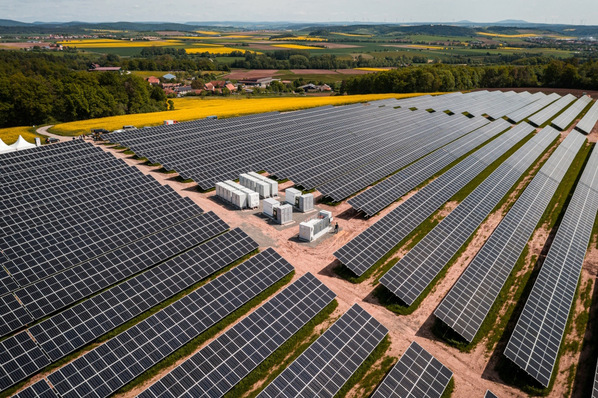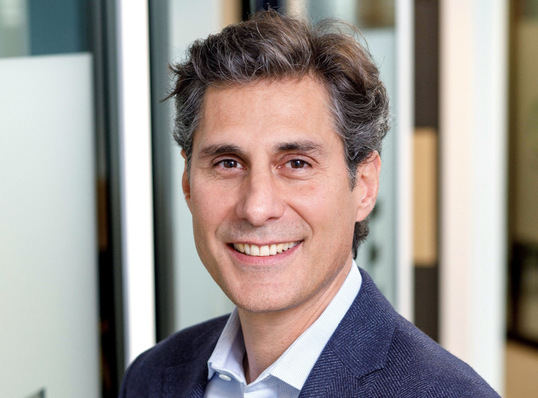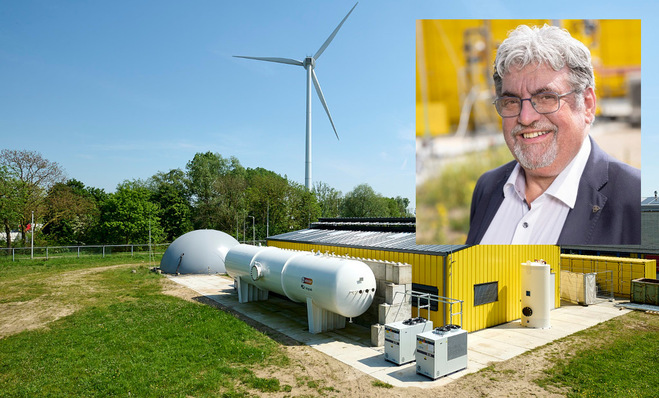Just last year, Tesvolt moved into new facilities in Apollensdorf on the outskirts of Wittenberg. But space is already getting tighter: “In 2017, we supplied our commercial storage units to 30 different countries on all six continents,” Daniel Hannemann, CEO of Tesvolt, recounts. “We are on the brink of going mass market. That may not happen next year or even the year after. But it will happen soon.”
In Munich in 2017, Tesvolt presented the new commercial storage units that came equipped with Samsung SDI’s prismatic cells. The Koreans provide preassembled battery modules with a storage capacity of about five kilowatt hours.
Charging and discharging at 1C
The modules are configured as 1C systems, i.e. they can be charged and discharged at five kilowatts. At the Wittenberg plant, the batteries have the power electronics, the management systems and the wiring added. The units can be supplied as low-voltage systems at 48 volts and as high-voltage units.
Tesvolt also provides very large systems at 0.5 megawatt hours, and those as ready-to-connect container units. For example, such outdoor cabinets allow an installation as high-performance storage connected to charge points at parking lots.
Power electronics by SMA
The power electronics are provided by SMA: Sunny Tripower Storage 60, Sunny Island or Sunny Central Storage, depending on the size and application. “We are cooperating with SMA when it comes to sales,” Hannemann says. “Our international customers take advantage of the usual customer service and global support that SMA provides, even monitoring is taken care of by SMA.”
Tesvolt has been nurturing this strategic cooperation from very early on, which is now bearing fruit. Using SMA products constitutes a de facto standardisation of the power electronics for Tesvolt’s commercial storage systems.
The batteries are very easy and quick to put into operation – using plug connectors and very little effort. “The range of applications of storage for commercial businesses is much broader than for domestic storage. There is a massive need for further training,” according to Mathias Zdzieblowski who is in charge of the training programme. “Our trainings for the initial installation last one day. The complexity of installation and commissioning is kept to a minimum. This gives the installing company the certainty when calculating sales.”
Distribution directly to installing companies
Tesvolt sells their storage systems directly to installing companies; in a two-stage process. “Only in a few countries do we go through wholesalers,” Daniel Hannemann reports. “In Germany, our customers are primarily installing companies, between 60 and 70 so far. They are now familiar with our systems and know how to install them.”
Overseas, Tesvolt often cooperates with German EPCs, e.g. for installations in Africa. In Australia, the market is developed together with regional partners, who also take care of the after-sales service.
Not yet routine
So far, commercial storage has not become an everyday business segment, as Mathias Zdzieblowski analyses: “Many installing companies have yet to build a relationship to commercial customers. For that reason, we are increasingly reorienting our marketing efforts towards generating our own leads, which we can then pass on to our specialist partners.”
In Europe, commercial storage is not only happening in Germany. Demand is also on the rise in the UK, Czechia and Scandinavia. Northern Europe predominantly sees the installation of off-grid systems. “In late May, we have been initiating our training programme for installing companies in Austria,” Mathias Zdzieblowski says. “And soon we will also start in Switzerland.”
Made it at last
In 2017, the Wittenberg-based company has managed to break even. Since then, the company has been in the black – without an outside investor, but purely by their own efforts. And while Mercedes-Benz has abandoned their plans for batteries and other manufacturers are still operating at a loss, Tesvolt is about to go the next step: By the end of 2018, assembly will be mostly automated.
So far, assembly of the battery systems is manual, including the wiring and circuit boards, which are put together by hand. “Once we have the assembly cells up and running, our productivity will increase five-fold.” Preparations have been underway for the last six months: Machines and processes need to be developed from scratch in cooperation with the engineers of their suppliers. That sort of thing is not available off the peg.
All staff are hand-picked
Tesvolt currently has about 40 employees, “all hand-picked,” as Hannemann puts it. And the company is seeking to hire more staff. By late 2018 it could be 50 to 60. For quality assurance, they are establishing their own test centre, including facilities for testing batteries and storage systems.
For example, when the battery modules come in from Korea, they have to be cycled (charged and discharged) at least once, before they can be moved on to Africa or the US.
The business of commercial storage is project-based. You do not just set it up like a domestic unit. But the overall complexity of planning has come down in recent years. At least for Tesvolt systems. After all, they are integrated into SMA’s Sunny Design as well as Valentin Software’s planning application PV-Sol. In the US market, the inverter of choice is the new Sunny Core which had also been presented last year in Munich. (HS)
Watch our PV Guided Tour on commercial energy storage.
Stay informed, get our newsletter twice a week. Register here.
Read more about solar modules.
Read more about solar mounting systems.
Read more about solar energy storage.







